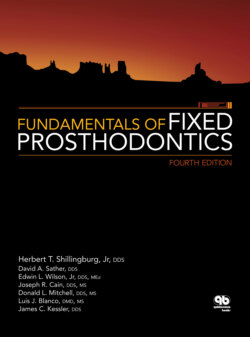Читать книгу Fundamentals of Fixed Prosthodontics - James C. Kessler - Страница 40
Molar disocclusion
ОглавлениеWhen subjects with normal occlusions perform repeated lateral mandibular movements, they will not trace the same path on electronic recordings, presumably because of the flexible nature of the articular disc. The measured deviation averages 0.2 mm in centric relation, 0.3 mm in working movements, and 0.8 mm in both protrusive and nonworking movements.53 To avoid occlusal interferences and nonaxially directed forces on molars during eccentric mandibular movements, molar disocclusion must equal or surpass these observed deviations in mandibular movement.
Healthy natural occlusions exhibit clearances that will accommodate these aberrations. Measurements of disocclusions from the mesiofacial cusp tips of mandibular first molars in asymptomatic test subjects with good occlusions showed separations averaging 0.5 mm in working, 1.0 mm in nonworking, and 1.1 mm in protrusive movements.54 Therefore, one of the treatment goals in placing occlusal restorations should be to produce a posterior occlusion with buffer space that equals or surpasses the deviations resulting from natural variations found in the TMJ.
